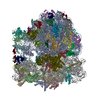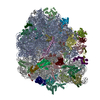+Search query
-Structure paper
| Title | The cyclic octapeptide antibiotic argyrin B inhibits translation by trapping EF-G on the ribosome during translocation. |
|---|---|
| Journal, issue, pages | Proc Natl Acad Sci U S A, Vol. 119, Issue 19, Page e2114214119, Year 2022 |
| Publish date | May 10, 2022 |
 Authors Authors | Maximiliane Wieland / Mikael Holm / Emily J Rundlet / Martino Morici / Timm O Koller / Tinashe P Maviza / Domen Pogorevc / Ilya A Osterman / Rolf Müller / Scott C Blanchard / Daniel N Wilson /    |
| PubMed Abstract | Argyrins are a family of naturally produced octapeptides that display promising antimicrobial activity against Pseudomonas aeruginosa. Argyrin B (ArgB) has been shown to interact with an elongated ...Argyrins are a family of naturally produced octapeptides that display promising antimicrobial activity against Pseudomonas aeruginosa. Argyrin B (ArgB) has been shown to interact with an elongated form of the translation elongation factor G (EF-G), leading to the suggestion that argyrins inhibit protein synthesis by interfering with EF-G binding to the ribosome. Here, using a combination of cryo-electron microscopy (cryo-EM) and single-molecule fluorescence resonance energy transfer (smFRET), we demonstrate that rather than interfering with ribosome binding, ArgB rapidly and specifically binds EF-G on the ribosome to inhibit intermediate steps of the translocation mechanism. Our data support that ArgB inhibits conformational changes within EF-G after GTP hydrolysis required for translocation and factor dissociation, analogous to the mechanism of fusidic acid, a chemically distinct antibiotic that binds a different region of EF-G. These findings shed light on the mechanism of action of the argyrin-class antibiotics on protein synthesis as well as the nature and importance of rate-limiting, intramolecular conformational events within the EF-G-bound ribosome during late-steps of translocation. |
 External links External links |  Proc Natl Acad Sci U S A / Proc Natl Acad Sci U S A /  PubMed:35500116 / PubMed:35500116 /  PubMed Central PubMed Central |
| Methods | EM (single particle) |
| Resolution | 2.58 - 2.9 Å |
| Structure data | EMDB-13058, PDB-7otc: EMDB-26486, PDB-7ug7: |
| Chemicals |  ChemComp-MG:  ChemComp-ATP: 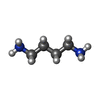 ChemComp-PUT: 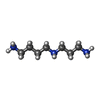 ChemComp-SPD:  ChemComp-ZN:  ChemComp-GDP:  ChemComp-1I7: 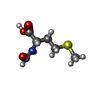 ChemComp-FME: 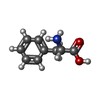 ChemComp-PHE: |
| Source |
|
 Keywords Keywords | RIBOSOME / antibiotic / translation / Translocation / EF-G / Argyrin |
 Movie
Movie Controller
Controller Structure viewers
Structure viewers About Yorodumi Papers
About Yorodumi Papers




